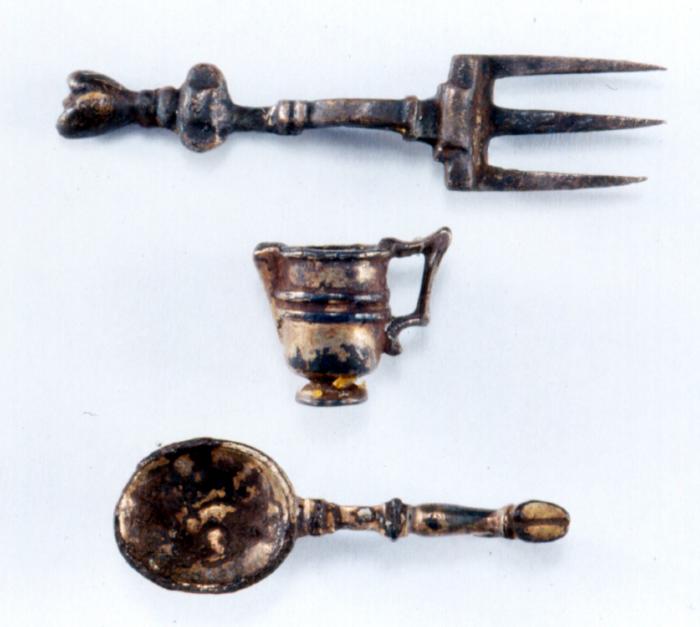Votive Objects
Physical Object
1986.008.0001a
Nuestra Señora de Atocha (1622)
1622
Small vermeil charms in the form of a spoon, fork, and ewer (a type of pitcher) come from the Atocha. The spoon has a loop on the back, as if it were meant to be stitched or otherwise attached to something else, and this loop may indicate the purpose for all. In some Spanish and Spanish colonial religious traditions, miniature representations of objects, figures, and body parts were given as votive objects. These milagros or exvotos were attached to altars, shrines, or the garments of religious figurines found within places of worship. Milagros were given as acts of devotion or with the hope of their aiding the answer of a prayer.
Thousands of milagros of various shapes and sizes were offered by the faithful annually. From time to time, a priest would collect them and have them melted down to support the church that had received them. More offerings would soon take their places.
Thousands of milagros of various shapes and sizes were offered by the faithful annually. From time to time, a priest would collect them and have them melted down to support the church that had received them. More offerings would soon take their places.
